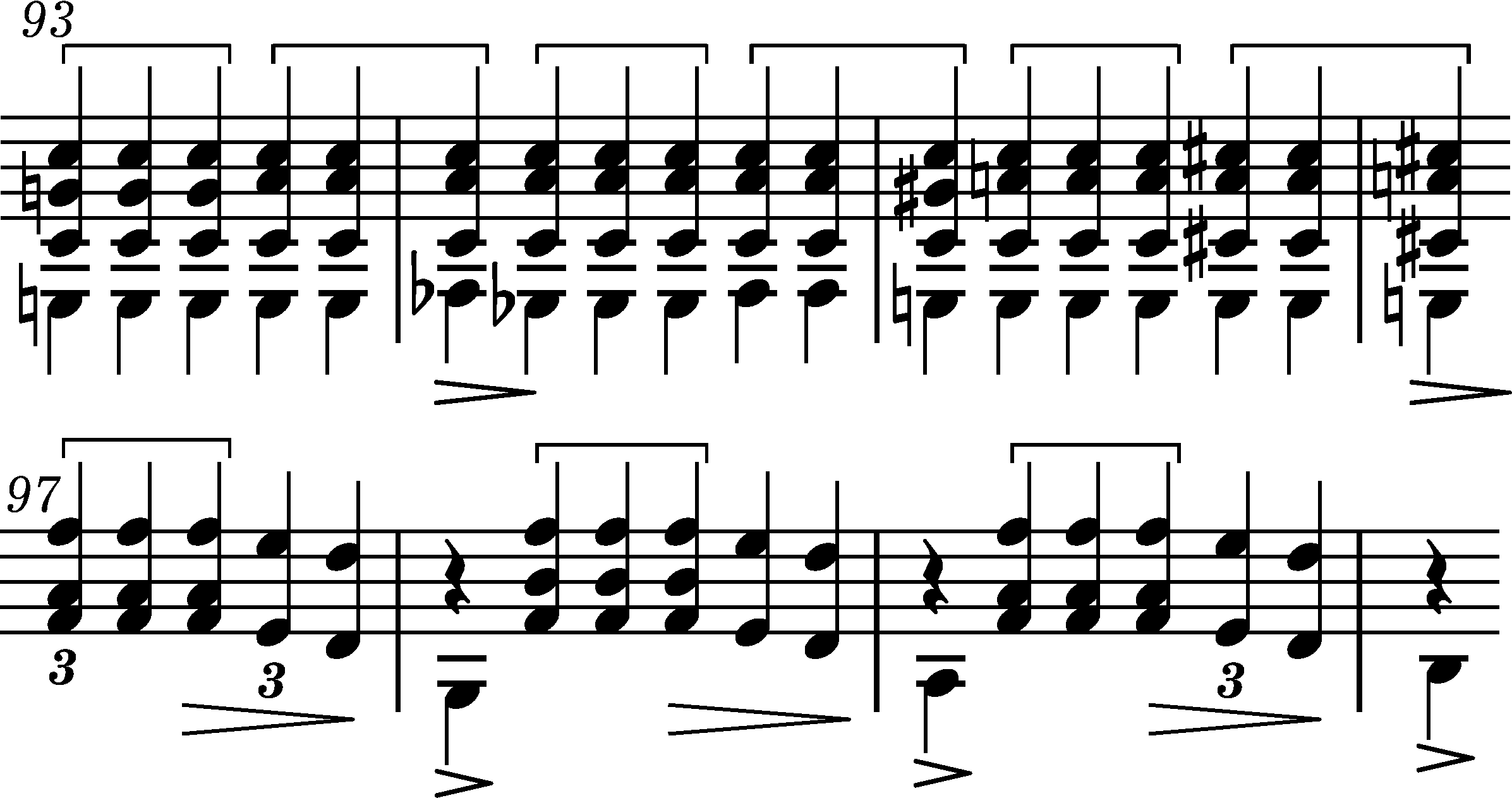



The comparison of various source versions of accentuation and slurring of bars 93-97 and 221-225 allows to trace the process of the notation's changes, which results in a transformation of the structural concept of these fragments. Assuming a natural, compatible with the music's course order of writing and proofreading of particular sources, one can name three phases of the concept's shaping:
-
A close reference to the motivic structure of bars 81-90 and 209-218.
We can see this situation in GC (→GE) and FE1 (→FE2), in which both the slurs and the accents generally exactly correspond to bars 81-84 (not including accidental inaccuracies):

-
Resignation from separating three-note motifs with an accentuated middle note. The floor is taken by a natural grouping of chords in which it is identical chords, grouped in three, with a metric accent on the last of them, that becomes an audibly perceptible structure. The groups are not marked by Chopin in any specific way, as they are used only as a building material of bigger, single- and double-bar structures within a four-bar section. They are articulated by the movement of the top voice, dividing the four-bar sections into two two-bar sections, each with an internal climax, emphasised with an accent and a temporary change of the bass note.
It is the notation of GC and FE in the recapitulation (bars 221-224) that meets this stage:

In brackets we give the elements that are not present in all sources. In turn, we marked the aforementioned groups of identical chords with braces. Their meaning becomes clear in the final phrase of the exposition (bars 97-100 and 225-228), in which they are used as active, initial elements of five-note motifs – see the example below. -
Unification of the accentuation of the exposition and recapitulation (in the proofreading of FE3) and enhancement of the slurring of the recapitulation in the base text to EE. While proofreading FE3 (→FE4), Chopin did not remove the slurs, yet he nullified them, by eliminating the accents related to them:

Leaving only two accents integrates this four-bar section, by shaping the crescendo wave with two clearly marked crests. In the base text to EE, prepared most probably at the same time, Chopin took care only of the recapitulation – the added slurs in the L.H. emphasise the beginning of the 2nd and 4th bar of the section, whereas the slur of the R.H. accentuates the unity of the entire structure:

Therefore, one can state that elimination of disintegrated motifs, referring to an already used scheme, performs a double function – it both shapes a compact, four-bar dynamic structure and motivically prepares the entrance of the spectacular final phrase in a clearer manner.
Compare the passage in the sources »
category imprint: Graphic ambiguousness; Differences between sources; Corrections & alterations
issues: Long accents, Authentic corrections of FE, Inaccuracies in GC
notation: Articulation, Accents, Hairpins




